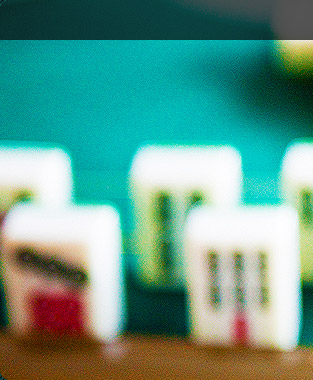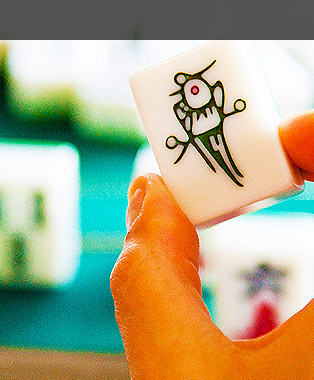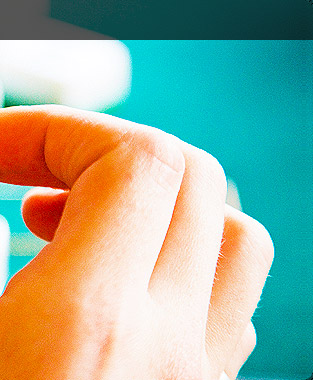Majiang Tiles
Majiang can be played using a set of tiles, or in some instances, a set of playing cards known as Mhing.
Majiang tiles have been made from various materials throughout the years. Traditionally, Majiang tiles were made from bones, backed with bamboo. Today, Majiang tile sets are made from plastics like bakelite, celluloid, and nylon.
There are a small number of sets that have been made with ivory, but these are very rare. In fact, most sets sold as ivory are made from bones.
Regardless of the material used to construct the tiles, the symbols on them are almost always engraved or pressed into the material. It is said that some expert players can determine the face value of their tiles just by feeling these engravings with their fingers.
Many Majiang tile sets will also include a set of chips or bone tiles for scoring, as well as indicators denoting the dealer and the wind of the round. Some sets may also include racks to hold tiles or chips (although in many sets the tiles are generally sufficiently thick so that they can stand on their own), with one of them being different to denote the dealer's rack.
A set of Majiang tiles will usually differ from place to place. It usually has at least 136 tiles, most commonly 144, although sets originating from America or Japan will have more. The dimension of the tiles is typically around 30 x 20 x 15mm. A set of Majiang tiles include:
Circle suit - 4 sets of 9 tiles (36 pieces in all) numbered from 1 to 9. The picture on each tile shows the appropriate number of circles. Each circle is said to represent copper (tong) coins with a square hole in the middle.

Bamboo suit - 4 sets of 9 tiles (36 pieces in all) numbered from 1 to 9. Each tile shows the appropriate number of bamboos except for the One of Bamboos which often is denoted by a sparrow or rice-bird. Each stick is said to represent a string (suo) that holds a hundred coins.

Character suit - 4 sets of 9 tiles (36 pieces in all) numbered from 1 to 9. Each tile shows the Chinese symbol for the number represented. Each tile represents ten thousand (wan) coins, or one hundred strings of one hundred coins.

Wind tiles - 4 tiles for each of the 4 winds (16 pieces in all). The 4 winds are East, South, West, and North.

Dragon tiles - 4 tiles for each of the 3 dragons (12 pieces in all). The 3 dragons are Red, Green, and White. Joseph Park Babcock introduced the term "dragon tile" in his 1920 book that introduced Majiang to America.

Flower tiles - typically optional components to a set of Majiang tiles, often contain artwork on their tiles.

域名 Majiang.net 正在出售中,如果您对该域名感兴趣,请点击这里提供您的报价。
The domain name Majiang.net maybe for sale. Please click here if you would like to make an offer.



